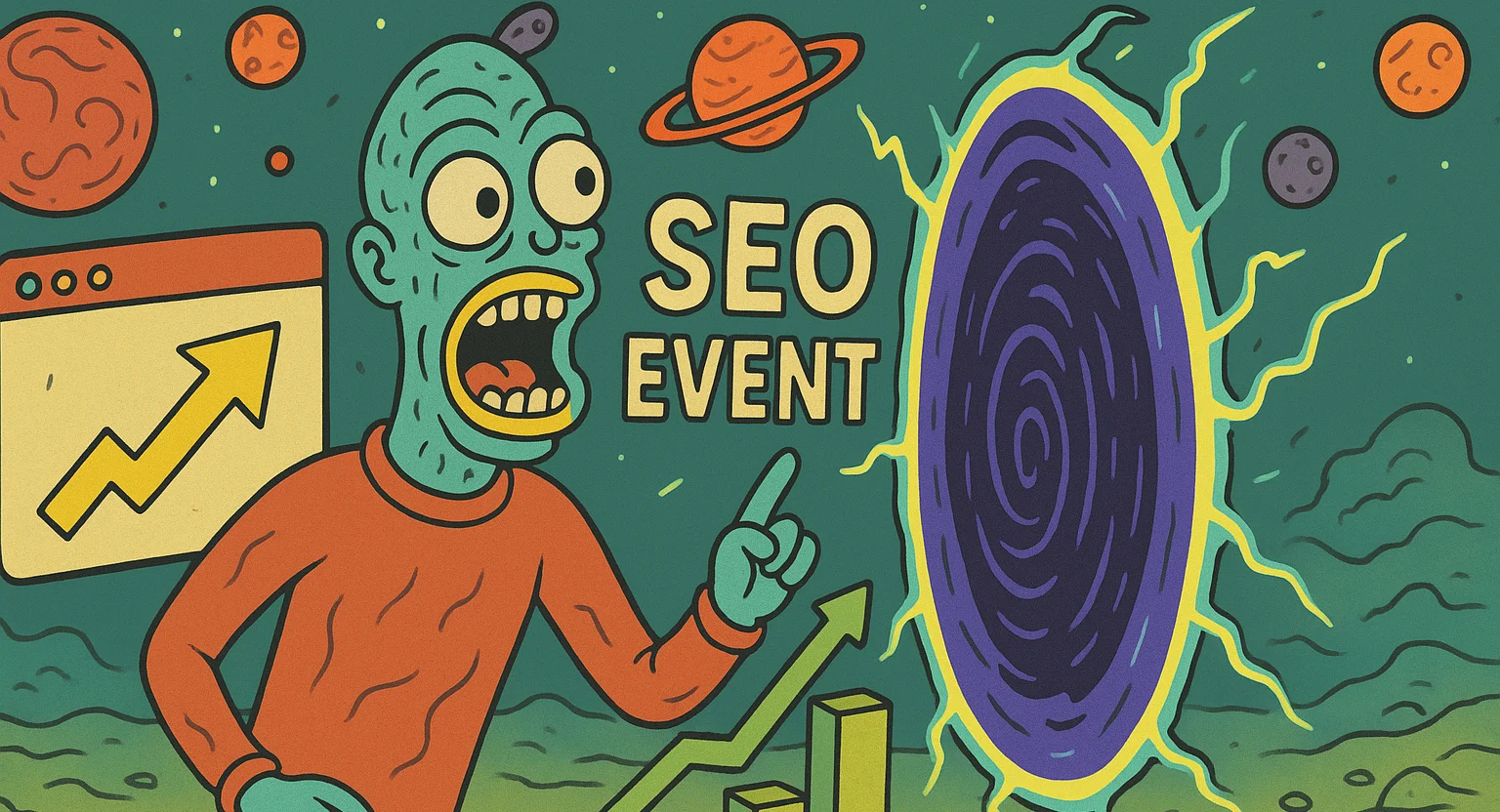Are you planning your next event and getting stuck on how big it should be?
When both a big-scale festival with a capacity of 10,000 attendees and a niche event like a coding bootcamp or a wine tasting are on the table, you should be interested in both ROI (return on investment) and ROE (return on effort) to make a final decision and prioritize one of the options.
It all comes down to profitability. Always. So, the question you need to find an answer to is “Which of the two events can give you more revenue?” While the answers seem to be obvious, and a big-scale event should be a confident winner, our findings might surprise you.
Would you believe that having 10 small events (with 500-1000 participants) organized is better than putting all the efforts into one big event with 10,000-15,000 attendees? The number of sold tickets is more or less the same, but the investment differs.
Let’s see why opting for a smaller event might be a winning strategy. Especially if you are on a tight budget.
The Myth of Bigger Is Better
While many might think that big events lead the way, this is actually not always true. The myth that bigger is better is debunked by different event organizers, and statistics show they are absolutely right.
Why Do Big Events Seem Irresistible?
They have their flair, we admit it. However, the beautiful picture and great buzz do not always equal big revenue.
Visibility, media buzz, and influencer appeal are the three major features that make any event organizer feel tempted to hold a festival, a web summit, or a tech expo, but each time they stumble upon challenges.
Hidden Costs and Risks that Bring You to the Ground
Higher awareness and more people come with hidden costs and certain risks that cannot be ignored. Let’s take a closer look at what it really takes to organize a festival.
Venue Cost
In short, the bigger the crowd, the steeper the price tag.
When planning a large public event, securing the right venue is one of the biggest challenges. The need to accommodate thousands of attendees instantly narrows your options.
So, you often find yourself choosing from what is available instead of renting the best place. What is more, availability rarely aligns with affordability. Add the summer season into the mix (peak time for weddings, festivals, and corporate gatherings). It’s simple supply and demand: the fewer the options, the more you pay.
Staffing
More people, more pressure.
Big events never succeed without personnel. When you organize a festival, you need to hire hundreds of people, including ushers, technicians, hospitality team members, and medics. Often, the following hires are also unavoidable:
- Specialized roles (e.g., AV techs, crowd managers) come at a premium.
- Last-minute hires due to cancellations or scaling needs.
- Overtime and shift coverage for multi-day or late-night events.
Staffing is among the top three budget stressors for large-scale events, especially when roles require certification or training, so be ready to dedicate a big share of your budget to personnel involved.
Security: Safety Isn’t Optional
The bigger the crowd, the more security layers you need.
What seems to be a simple task to do turns out to be full of challenges and extra work, as you will have to ensure:
- Risk assessments and emergency planning that are mandatory for public safety compliance.
- Trainings for personnel, as those are essential for crowd control and incident management.
- Tech infrastructure like surveillance, access control, and communication systems.
Given the importance of security at events with big crowds, be ready to allocate a part of your budget for it too.
Permits and Compliance
An unavoidable bureaucratic maze.
The U.S. Department of Justice highlights that major events often require coordination with multiple agencies, each with its own protocols and risk thresholds, and they are absolutely right.
Permits and compliance are necessary for small events as well, but a smaller scale makes handling easier. When you organize a festival, be ready to secure approvals for fire safety, alcohol, noise, sanitation, and public assembly.
Unfortunately, delays or denials pop up often, so be prepared for stressful management to prevail, timelines to be derailed, or costly venue or format changes. What is more, non-compliance fines or last-minute adjustments (e.g., fencing, signage, extra staff) can blow up budgets.
Logistics
Minor logistical breakdowns, major operational risks.
Logistics is never easy, but it becomes a real challenge when you organize a festival. There are plenty of things to keep in mind, and they eat up your time and budget. Some of the possible things that can mess up your event organization process are transport delays, vendor no-shows, and tech failures. Moreover, accessibility issues like parking, signage, and entry flow impact attendee satisfaction and safety, so you would need to take care of those, too.
Weather: The Unpredictable Wildcard
Even with the best forecasting tools, weather remains one of the most volatile risks.
Situations when everything is planned perfectly, but the unpredictable weather steps in, are not rare. You cannot do much to predict it, but you might like to have backup plans, including shelters, rescheduling, and insurance, in place. Those are essential for customer satisfaction but costly for your budget.
Why Small Events Can Outperform Big Ones
Let’s be honest, small events are not without similar challenges, but given the smaller scale, you have fewer headaches and fewer expenses. Those alone are good reasons to prefer small events over big festivals or expos, but there is more to it.
Less Expenses, More Conversion
If you are on a tight budget, a small-scale event is what you should opt for.
Why?
While venue costs, staffing, and logistics certainly play a role, the real advantage lies in marketing that allows you to spend less on advertising (which often eats a lion’s share of your budget) and still have an engaged audience showing up.
When you organize a small event, it is often centered around a specific interest. Whether it is a wine tasting, a coding bootcamp, or a fashion show, you already have that interested audience that does not need to be convinced. If they are interested, they will show up.
All you need is to find your target audience and run an advertising campaign to make sure they are aware of an event that matches their interest.
This marketing strategy is cheaper than spending money to advertise your event to a broader audience, hoping that some of the people reached will be interested.
Let’s talk numbers.
For a small event targeting 200 attendees, you’ll typically aim to reach 2,000 to 4,000 people, assuming a conversion rate of 5–10%. That’s a realistic benchmark for niche events with well-targeted advertising.
Here is a possible conversion scenario for running an online ad campaign:
| Ad Spend | $800 |
| Reach | 3,500 people |
| Click-Through Rate (CTR) | ~2.5%, which gives you ~88 clicks |
| Conversion Rate | 10%, which equals ~9 ticket purchases |
| Average Ticket Price | $25 |
| Revenue from Ads | ~$225 |
| Return on Ad Spend (ROAS) | ~28% |
Those are quite good numbers, but only if you have a fair chance of driving a lot of organic traffic. This one is really essential for events on a tight budget.
Moreover, you do not need to spend money on multi-channel exposure as it is with festivals, so the overall budget for a niche event marketing campaign is much smaller, and the potential of having a high ROI is quite good.
Benefits Beyond Cost
Though budget and costs play an essential role and are always taken into account, there are a couple of other reasons that might convince you to opt for a small event:
- Higher Engagement and Personalization: Smaller gatherings allow for tailored experiences, direct interaction, and deeper connection. Attendees are more likely to feel valued and engaged, which boosts satisfaction and retention (if you plan similar events in the future).
- Reduced Risk: A big-scale event gives you the only chance to have it right, so weather, technical failures, or low turnout can have a massive financial impact. At the same time, when you plan to have several smaller events, the pressure is lower and the stakes are not that high. It is not a tragedy if one of the gatherings does not go as planned.
- Faster Decision-Making and Execution: Small events require fewer approvals, making planning and further execution easier. Moreover, if you plan a series of similar events, you will already have a ready-made plan that can save you plenty of time and effort.
- Stronger Local Reach and Community Impact: With small-scale events, it is easier to tap into local audiences, build trust, and tailor messaging. At the same time, such targeting can lead to higher conversion rates and long-term loyalty.
As you can see, smaller events have their undeniable advantages that should not be neglected.
ROI & ROE Comparison: Small vs. Big
When comparing small events (500–1,000 attendees) to a single large-scale event (10,000–15,000 attendees), the ROI often remains similar, but the cost per attendee tends to be significantly lower in smaller formats. Why?
Large events demand high upfront investment (venue, security, infrastructure, and contingency planning), while smaller events benefit from leaner logistics and localized execution.
If you take a look at the numbers, you will see that niche events with smaller budgets and higher targeting are winning in terms of ROI.
ROI Comparison: Festival vs. Wine Tasting
| Metric | Festival (Large-Scale) | Wine Tasting Gathering (Small-Scale) |
| Typical Attendance | 20,000–50,000 | 50–200 |
| Total Cost | $1.5M–$3M | $10K–$50K |
| Revenue Potential | $2M–$4M | $15K–$80K |
| Cost per Attendee | $60–$75 | $50–$250 |
| Revenue per Attendee | $80–$100 | $100–$400 |
| Sponsorship | Broad, but diluted | Targeted, premium |
| Upsell Opportunities | Merch, VIP zones | Wine sales, tasting tiers |
| Break-even Threshold | High | Low |
| Margin ROI | 20-30% | 40-60% |
While for ROI we can’t say we have a clear winner, the situation is different when it comes to ROE. Smaller events mean less effort but the same or better impact. The team has less work, less stress, and more flexibility if they organize a niche event. Moreover, the experience gained from the initial events can be easily shifted to upcoming ones, simplifying the process even further and improving the effort-to-impact ratio.
ROE Comparison: Festival vs. Wine Tasting
| Metric | Festival (Large-Scale) | Wine Tasting Gathering (Small-Scale) |
| Planning Time | 6–12 months | 4–8 weeks |
| Stress Level | High | Moderate to low |
| Approval Cycles | Multiple layers | Minimal |
| Reusability | Low | High (repeatable format) |
| Attendee Interaction | Limited | High-touch, personalized |
| Flexibility During Execution | Low | High |
| Effort-to-Impact Ratio | Moderate | High |
Should You Go Small Every Time?
The numbers and benefits state that small-scale events are an excellent option that gives much more in terms of ROI and significantly more in terms of ROE.
Yet the choice between small and large-scale events is not always obvious (even if the estimated budgets and expected revenue say go for it). So, should you just focus on small-scale events and forget about the large-scale format? We will not be original here by saying “It depends.” It really depends on so many factors. Budget and potential revenue are just some of the aspects to consider.
Budget & Resources
Large events demand significant upfront investment in logistics, staffing, and infrastructure. If your team is on a tight budget, small-scale formats are more suitable, as you get faster ROI. So, always consider not only the total spend but also the cost per attendee.
Audience Goals
If your goal is visibility or brand awareness, a festival-style event is ideal. However, if you’re aiming at loyalty-building or launching a premium product, smaller events allow for deeper engagement and personalization.
Revenue Model
Evaluate how revenue is generated – ticketing, sponsorships, upsells, or product sales. Small events often give higher revenue per attendee through premium pricing and targeted offers. Large events may rely more on the large number of attendees and broader sponsorship packages.
Boost Event Revenue with Free, Scalable Ticketing from TicketsCandy
When the scale of the event is set, the budget is shaped, and advertisements are ready for launch, there is one more thing to do: find a convenient ticket-selling platform that won’t eat up your revenue with high fees. TicketsCandy is designed for that. It’s completely free to start, with no hidden fees for event organizers.
Sign up today and benefit from an efficient and highly adaptable platform that can be tailored both to boutique gatherings and open-air festivals or global conferences.
Conclusion
Despite the bigger number of people (meaning more tickets sold), organizing big-scale events is often challenging and sometimes even problematic. Small-scale formats, on the contrary, continue to prove their value and deliver stronger ROI, higher ROE, and greater strategic flexibility. Moreover, smaller budget, faster execution, and deeper audience engagement are convincing reasons to prefer niche events over big-scale ones in 2025.






